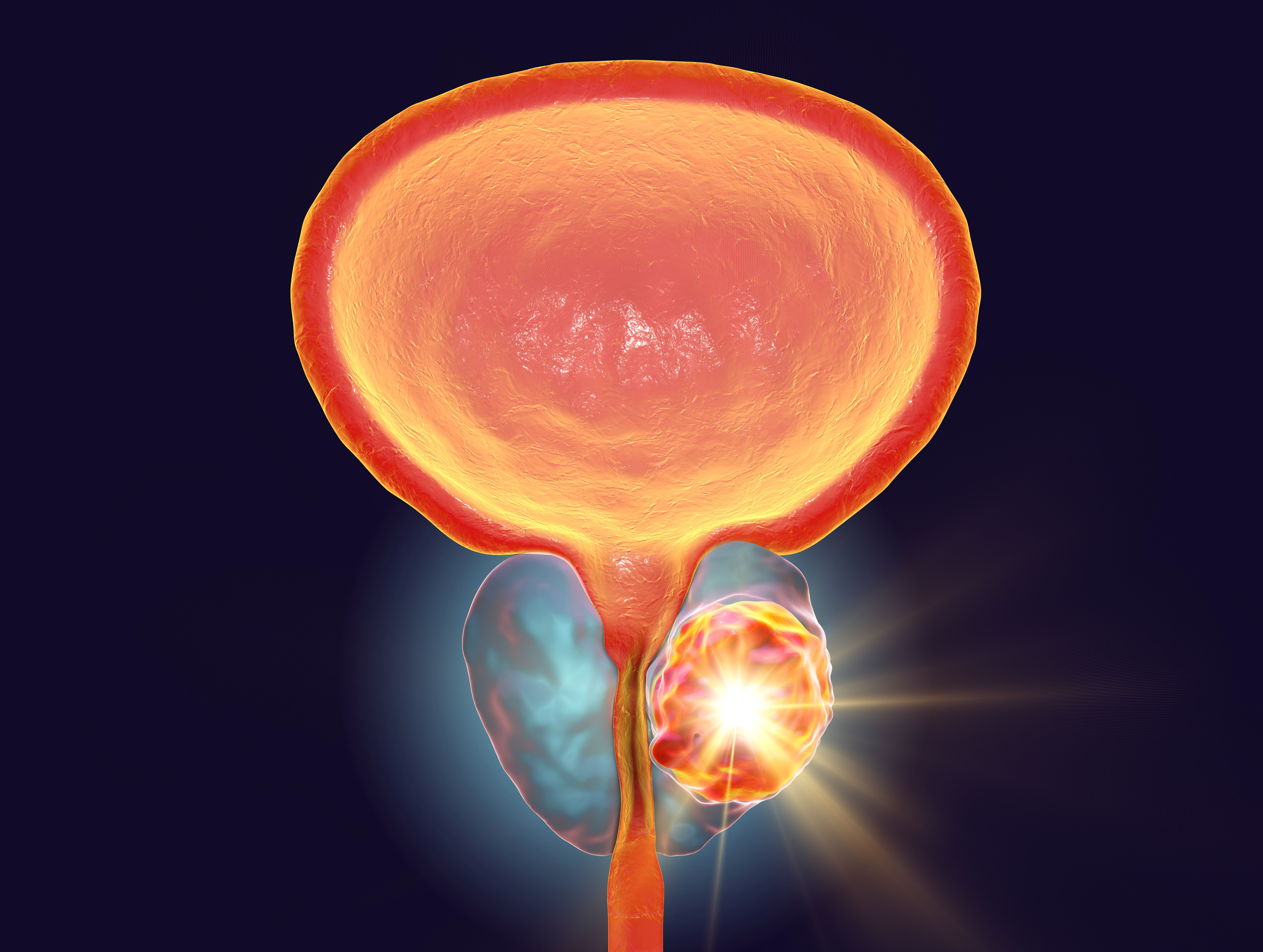Pembrolizumab/Cisplatin Combo Shows Promise in Small Cell Bladder Cancer, Neuroendocrine Prostate Cancer
Pembrolizumab with platinum-based chemotherapy yielded encouraging progression-free and overall survival outcomes in this patient population.
Pembrolizumab with platinum-based chemotherapy yielded encouraging progression-free and overall survival outcomes in this patient population.

For patients with small cell bladder cancer (SCBC) and neuroendocrine prostate cancer (NEPC), combination treatment with pembrolizumab (Keytruda) and cisplatin-based chemotherapy showed promising results in progression-free survival (PFS), overall survival (OS), and safety, according to results of a phase 1b trial (NCT03582475) published in Cell Reports Medicine.
The trial was split into 2 cohorts: cohort 1 for patients with metastatic or locally advanced naive SCBC (n = 7) and cohort 2 for patients with NEPC (n = 8).
Data showed that the overall response rate (ORR) of 43% (95% CI, 0.06-0.08) was reported across both cohorts. For PFS and OS, the median follow-up time was 34.2 months (range, 2.0-59.5). Across both cohorts, the 12-month PFS rate was 64% (95% CI, 0.44-0.95) and 79% (95% CI, 0.60-1.00), respectively; 24-month PFS and OS rates were 50% (95% CI, 0.30-0.84) and 71% (95% CI, 0.51-1.00), respectively.
Specifically in cohort 1, the 12-month PFS and OS rates were 86% (95% CI, 0.63-1.00) and 79% (95% CI, 0.63-1.00), respectively; 24-month PFS and OS rates were 86% (95% CI, 0.63- 1.00) and 86 (95% CI, 0.63-1.00). The median PFS and OS were not reached in cohort 1.
In cohort 2, 12-month PFS and OS rates were 43% (95% CI, 0.18, 1.00) and 57% at 12 months (95% CI, 0.30-1.00). Twenty-four month PFS and OS rates were 14% (95% CI, 0.2-0.88) and 57% (95% CI, 0.30-1.00). Median PFS was 7 months (95% CI, 1-not available [NA) and the median OS was 27 months (95% CI, 6-NA); the upper limit of 95% confidence interval was unavailable due to small sample size and scarcity of events.
“…We concluded that this combination was safe and tolerable, while no patient delayed or discontinued therapy secondary to treatment toxicity,” the study authors wrote. “We observed exceptional responders in both cohorts that support the clinical utility of this treatment strategy.”
Fifteen patients were enrolled, with 7 patients in cohort 1 and 8 patients in cohort 2. The intended population was all patients eligible for standard-of-care chemotherapy. Cohort 1 had 5 patients with nonmetastatic locally advanced bladder cancer and 2 patients with metastatic disease. Cohort 2 had 7 patients with treatment-emergent NEPC and 1 patient with small cell prostate cancer. One patient in cohort 2 pulled out from the treatment after 1 cycle and was not included in the study analysis.
The primary end points were PFS and OS. The secondary end point was safety and tolerability of pembrolizumab/chemotherapy treatment.
The median duration of pembrolizumab was 31 cycles (range, 2-35; cohort 1, 35 cycles; cohort 2, 13 cycles). At the time data was frozen, all patients completed 35 cycles of maintenance pembrolizumab. In cohort 1, all patients were given etoposide and cisplatin. In cohort 2, 38.5% of patients (n = 3) were given etoposide and cisplatin and 62.5% of patients (n = 5) were given docetaxel and carboplatin.
Of patients in cohort 1, 57.1% (n = 4) underwent radical cystectomy as a neoadjuvant regimen, after the initial chemotherapy-pembrolizumab regimen. One patient, during the surveillance period at 42 months after trial start, underwent radical cystectomy and did not have progressive disease. Another patient went through external beam radiation for brain metastasis.
Following pembrolizumab/chemotherapy treatment, 1 of 3 patients with T3aN0M0 disease that went through radical cystectomy had complete pathologic response and 2 remained with muscle-invasive disease and negative lymph nodes.
Regarding safety, Treatment-related Common Terminology Criteria for Adverse Events (CTCAE) grade 3 or higher adverse events (AEs) occurred in 57% (n = 4) of patients in cohort 1 and 25% (n = 2) of patients in cohort 2. One patient had grade 4 treatment-related hypocalcemia that resolved.
Fatigue, skin-related disease, diarrhea, peripheral neuropathy, and hypothyroidism were the most common treatment-related AEs. No patients delayed or discontinued therapy due to toxicity treatment and no patients required high-dose steroids. There were no treatment-related deaths.
The trial also investigated the predictor-capabilities of potential biomarkers. A correlation between peripheral expansion of expanded T-cell clonotypes between cycle 1 and progression when compared with PFS was observed.
The authors of the study note the heterogeneity in the study population as a limitation, which limited assessment of response by RECIST v1.1 criteria, as 4 patients in cohort 1 were unevaluable.
Reference
Gu Y, Ly A, Rodrigues S, et al. PD-1 blockade plus cisplatin-based chemotherapy in patients with small cell/neuroendocrine bladder and prostate cancers. Cell Rep Med. Published online November 12, 2024. doi:10.1016/j.xcrm.2024.101824